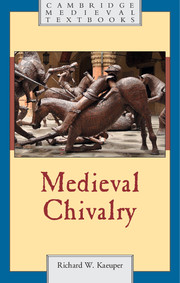Book contents
- Frontmatter
- Dedication
- Contents
- List of figures
- Acknowledgments
- Part I An approach to chivalry: was it real and practical?
- 1 The reality of medieval chivalry
- 2 Models of medieval chivalry
- Part II Three broad chronological phases
- Part III The privileged practice of violence
- Part IV Chivalry, governing institutions, and ideals
- Part V The world of chivalric emotions
- Reflections
- Select Bibliography
- Index
2 - Models of medieval chivalry
from Part I - An approach to chivalry: was it real and practical?
Published online by Cambridge University Press: 05 August 2016
- Frontmatter
- Dedication
- Contents
- List of figures
- Acknowledgments
- Part I An approach to chivalry: was it real and practical?
- 1 The reality of medieval chivalry
- 2 Models of medieval chivalry
- Part II Three broad chronological phases
- Part III The privileged practice of violence
- Part IV Chivalry, governing institutions, and ideals
- Part V The world of chivalric emotions
- Reflections
- Select Bibliography
- Index
Summary
The ideal process for reconstructing the working chivalric notions we seek would require the assistance of Merlin, with whose incomparable help we might assemble in one room a group of leading knights from various periods and regions. Prudently requiring these heroic if slightly touchy men to check their swords at the door, we could pose basic questions and surreptitiously record their eloquent answers, and perhaps even their grand gestures as they spoke with knowledge and feeling.
This chapter will argue that considerable agreement on basics would emerge from such a group, whatever the differences in point of view on some particulars. Since Merlin, sadly, is no longer available, we might best arrive at this understanding of working notions of chivalry – rather than abstract reform plans – by assembling information from and about a set of knights undoubtedly regarded as models in their lifetimes. They ideally should be drawn from various regions of Europe and various chronological points in the “age of chivalry.” Finding suitable great knights is not difficult, though surviving evidence does not provide as fully satisfying a chronology and regional distribution as might be desired.
To be most useful, those chosen should represent men highly praised by contemporary practicing men-at-arms as well as by clerics or intellectuals. We seek figures who were, in fact, elevated as model knights suitable for emulation. Clearly their lives and views must be recoverable. This requires that they formed the subjects of extensive accounts by others who knew them well (or had access to such knowledge) or wrote serious discussions on chivalry themselves. In short, we are searching for knights with detailed evidence available on active historical careers and as much information as possible about motivating ideals.
Five figures come quickly to mind as amply meeting these criteria. The first must be the cross-Channel hero William Marshal (d. 1219), whose life is recounted in the Histoire de Guillaume le Maréchal, our earliest nonroyal, nonclerical biography (completed in 1226) by an anonymous writer employed by the Marshal's family. Second, we can turn to the warrior-king Robert Bruce of Scotland (d. 1329), whose biography, Barbour's Bruce, was written in 1375–1377.
- Type
- Chapter
- Information
- Medieval Chivalry , pp. 25 - 56Publisher: Cambridge University PressPrint publication year: 2016

